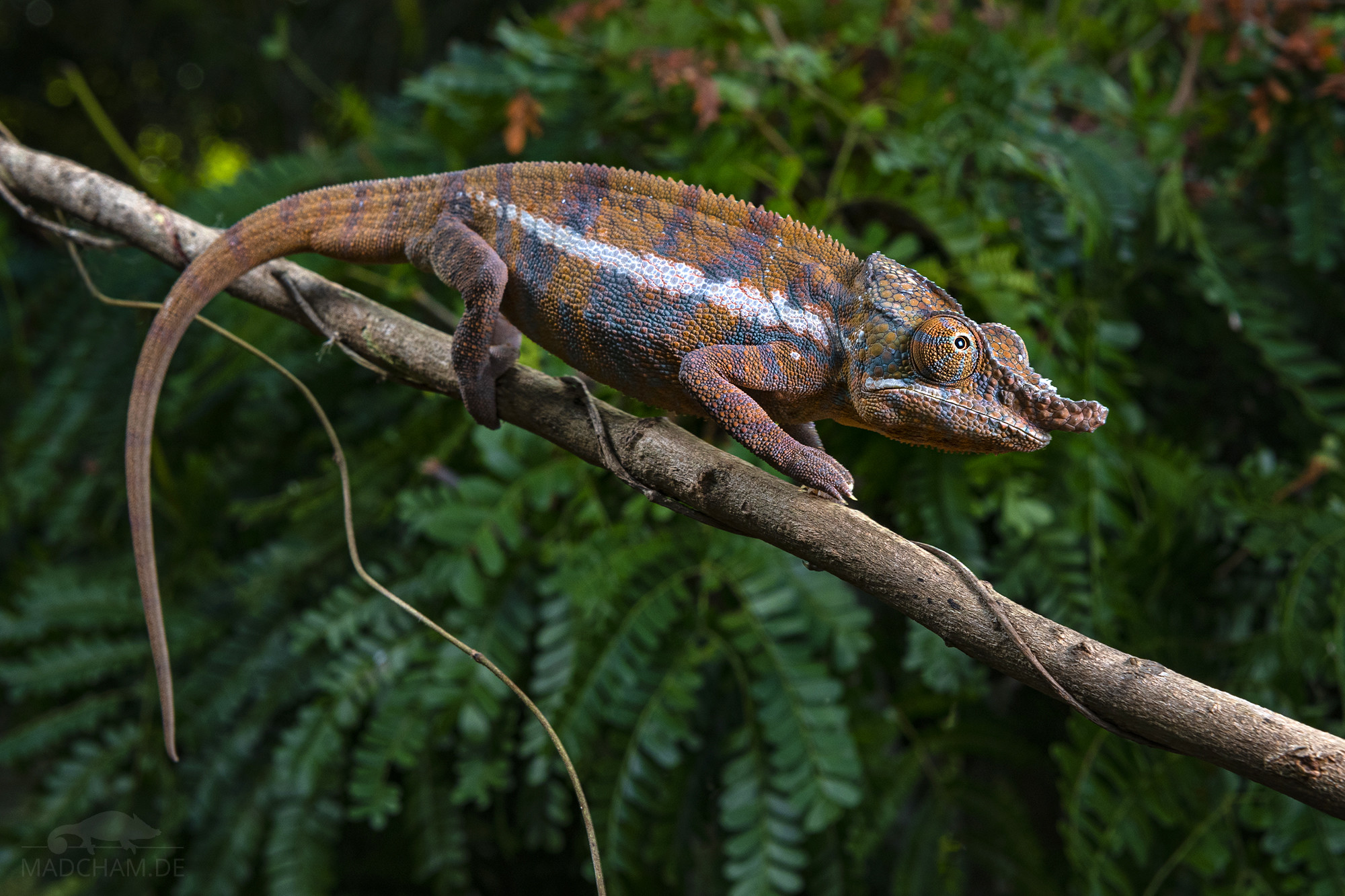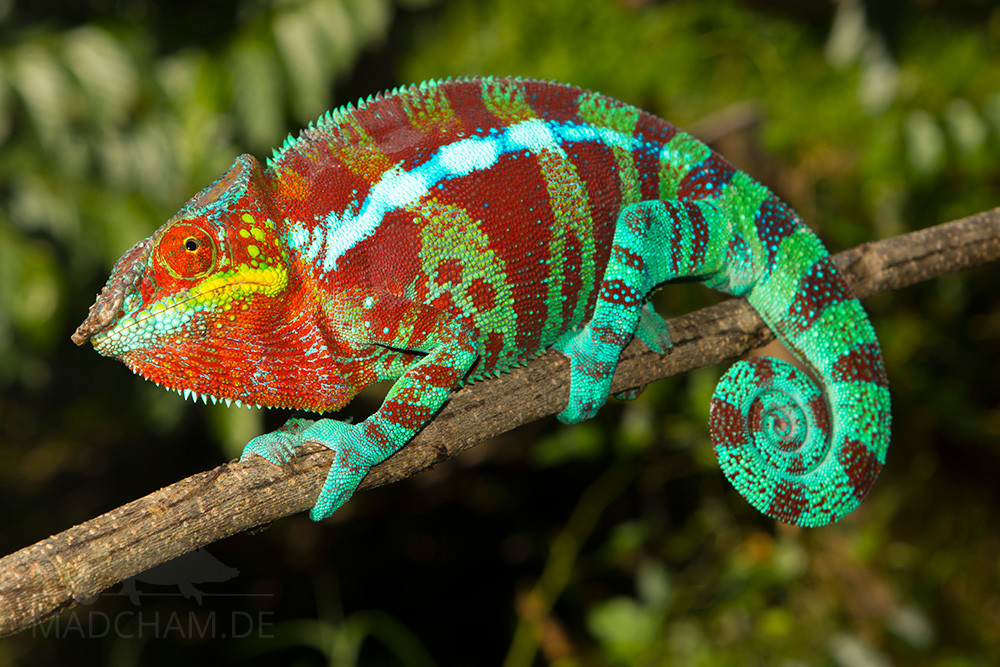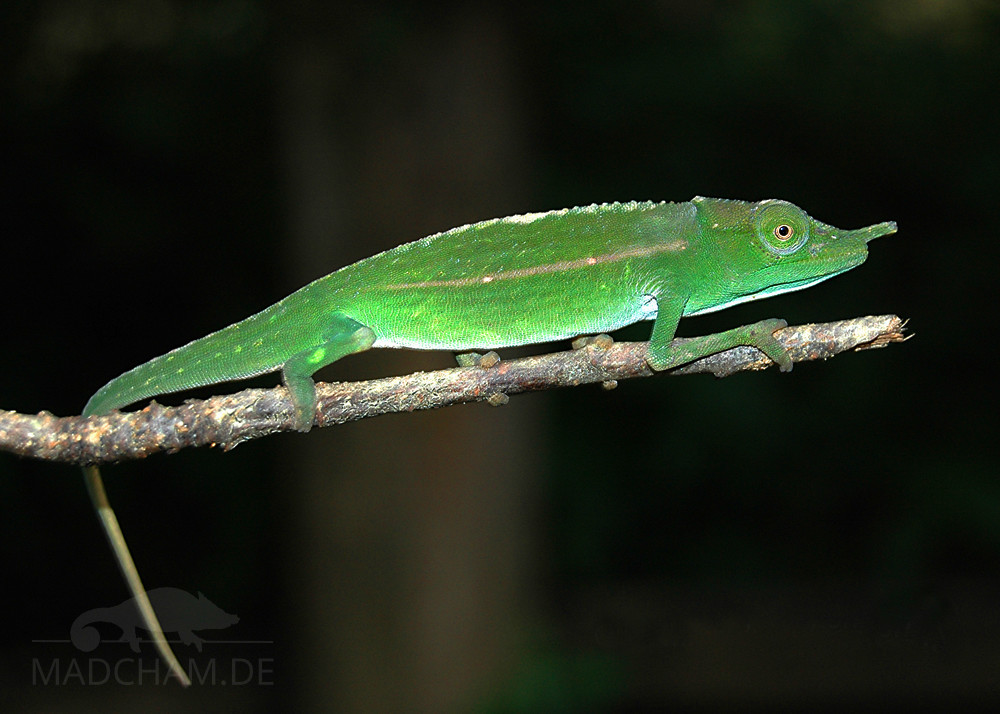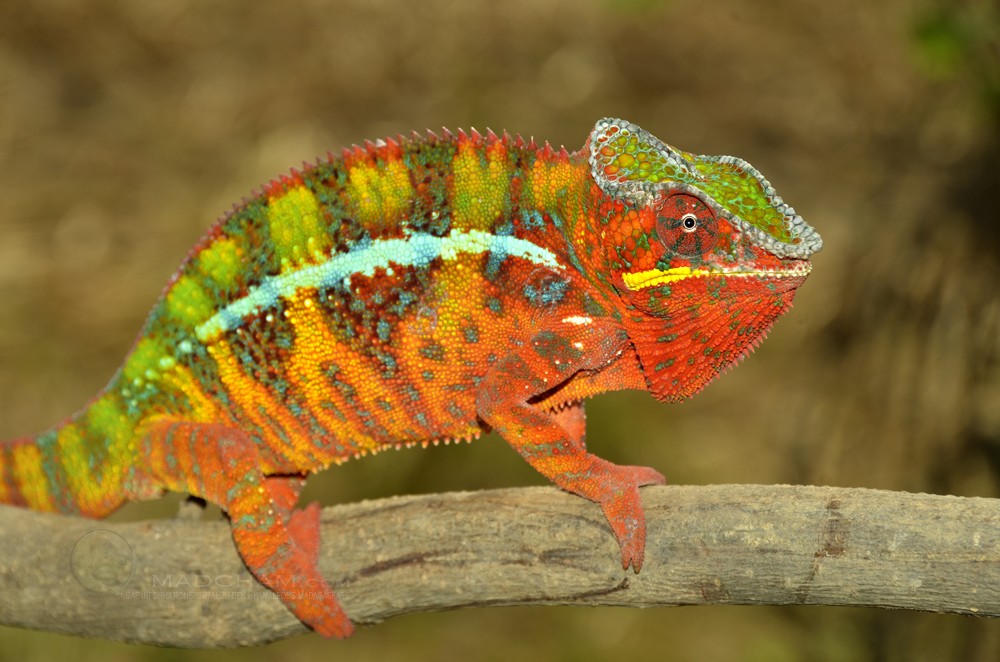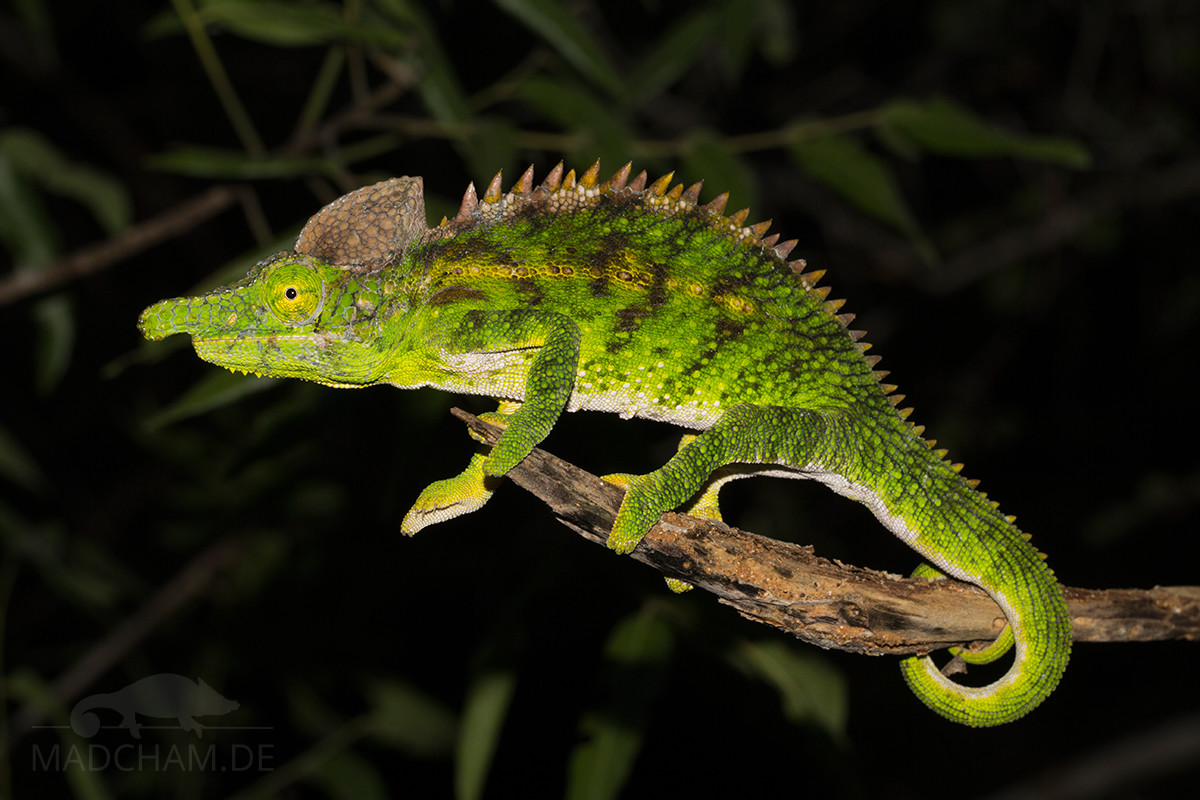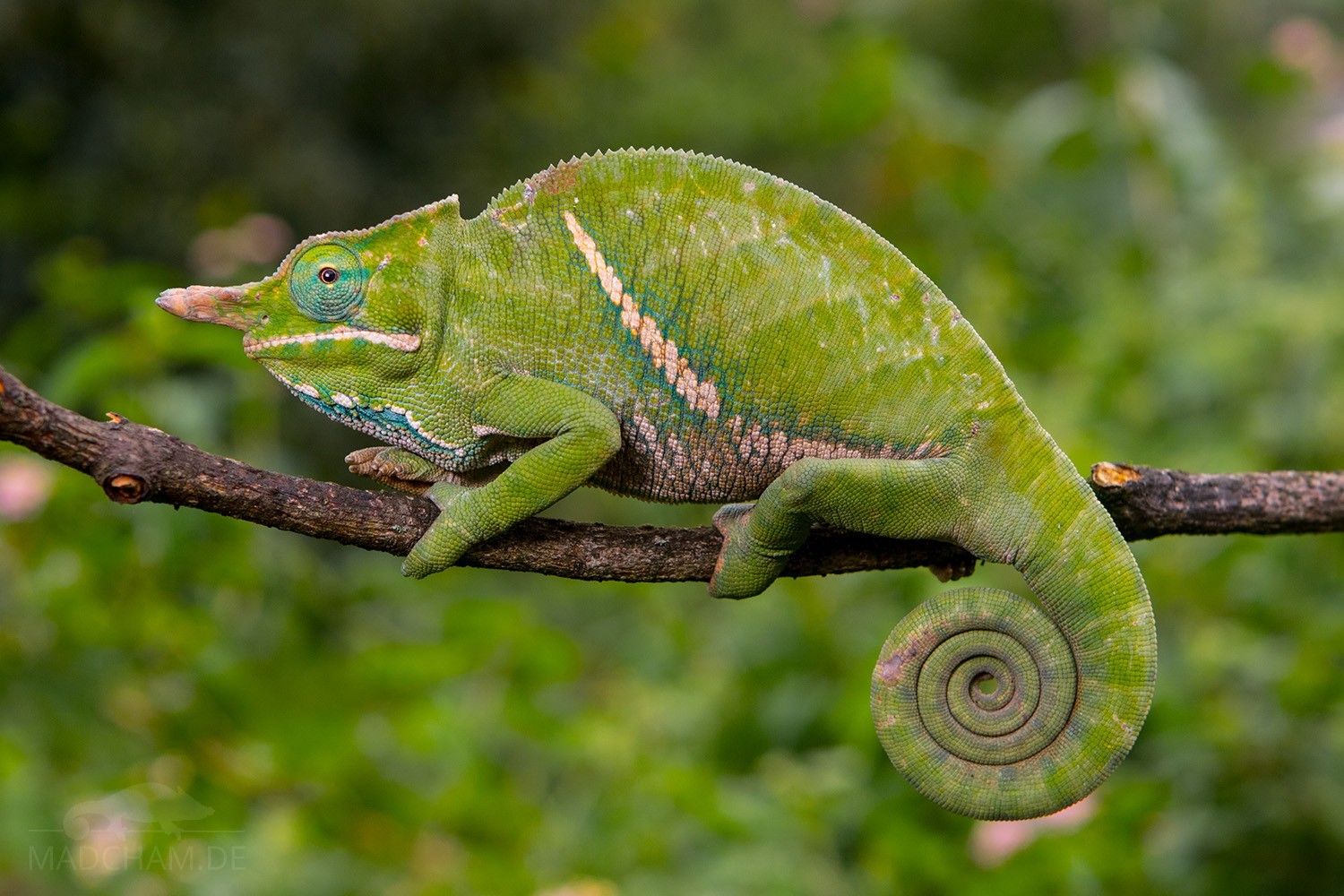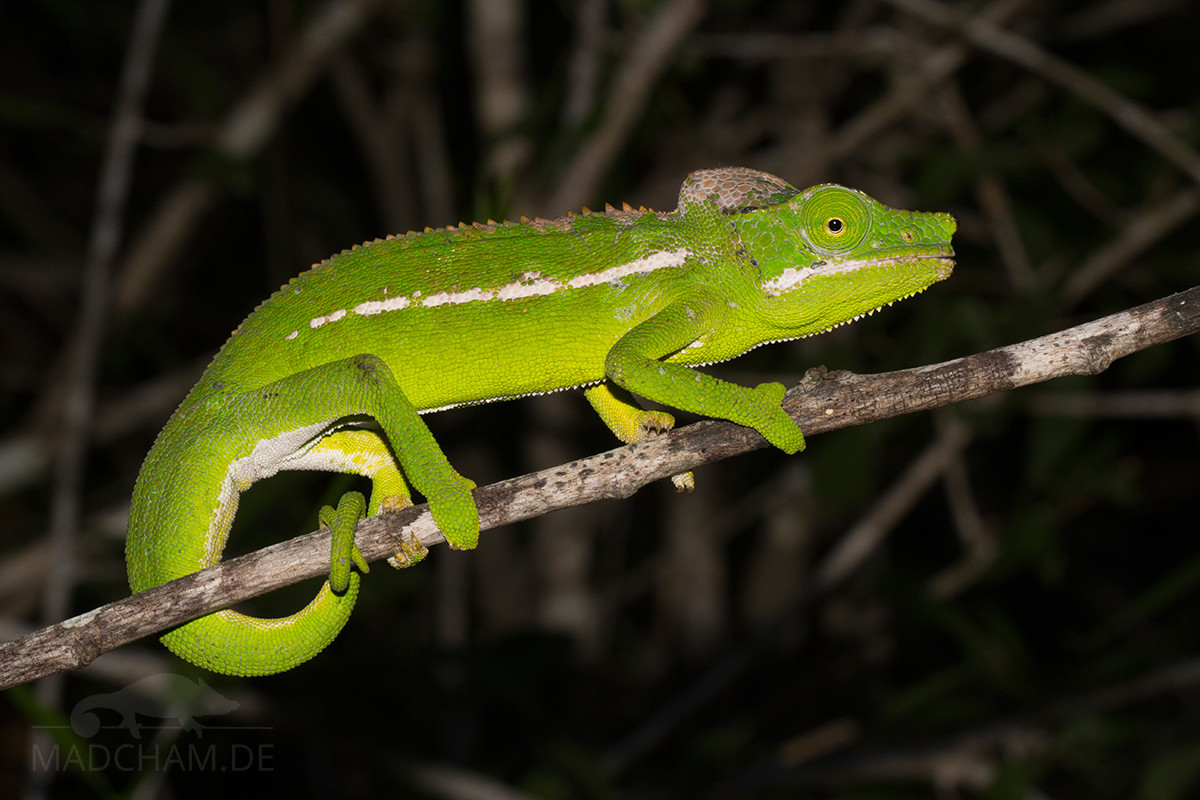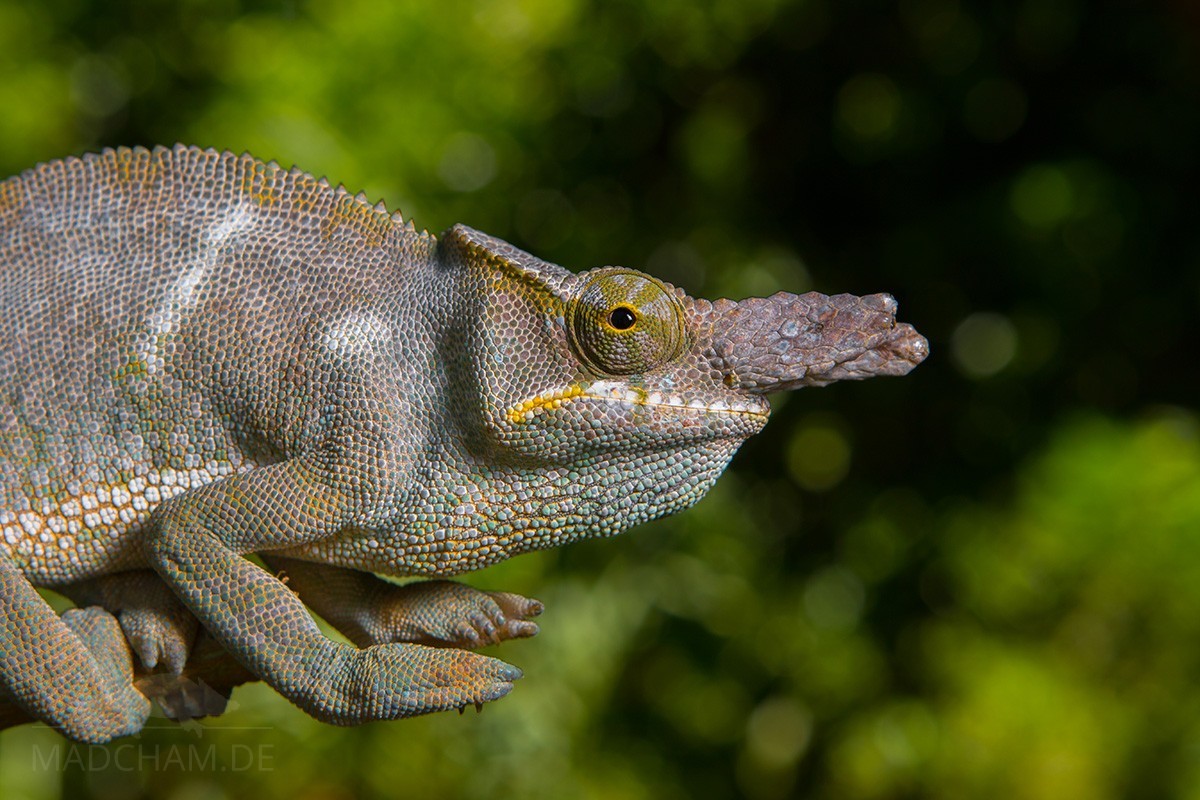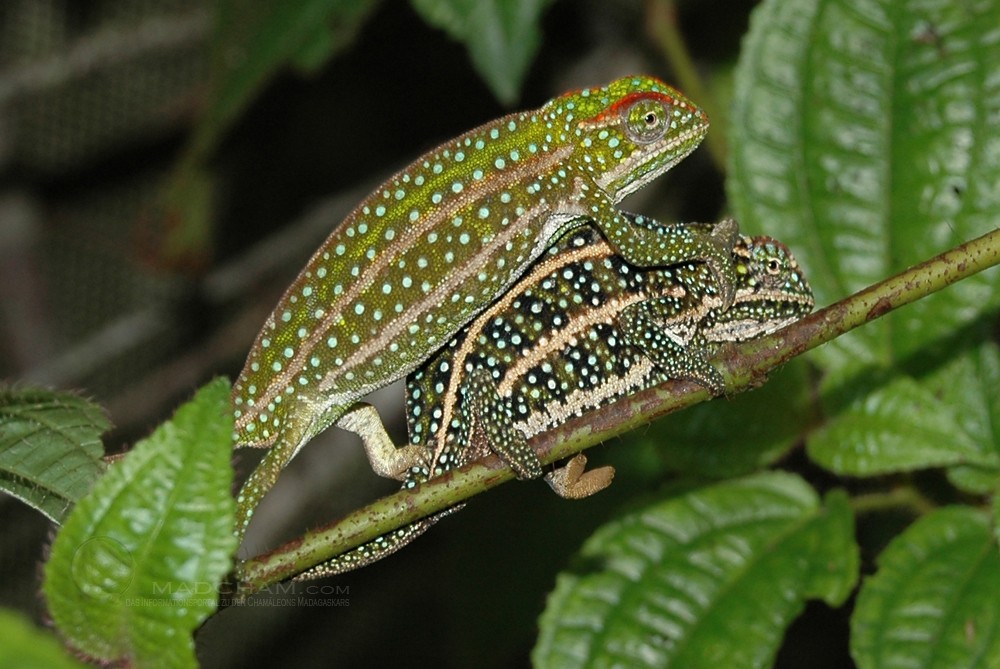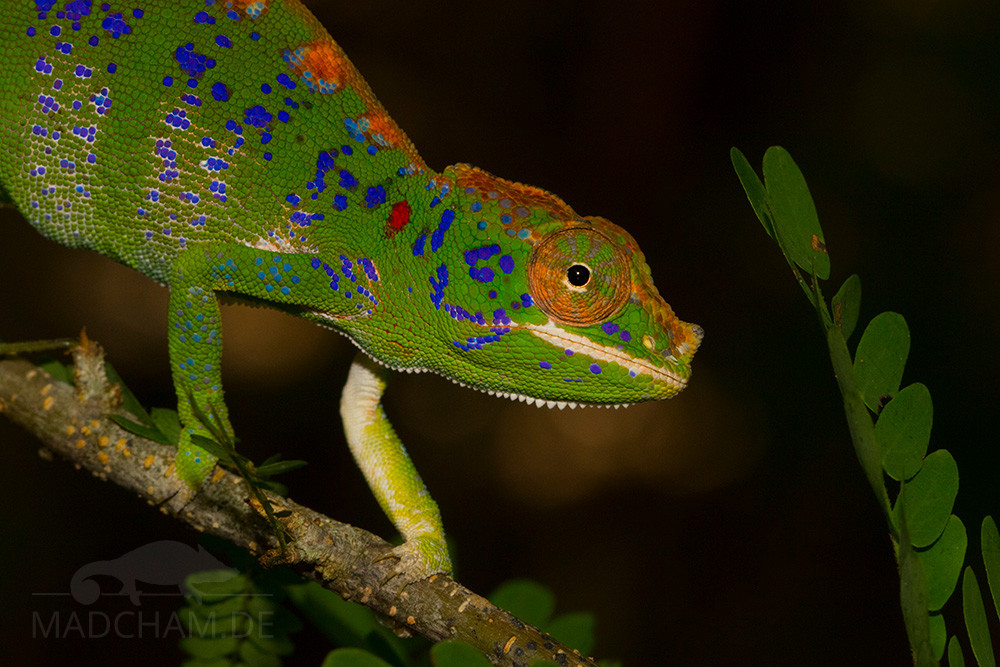Furcifer angeli
First description: (Brygoo & Domergue, 1968) Origin of the species name: The two zoologists Édouard-Raoul Brygoo and Charles Antoine Domergue of the Natural History Museum in Paris (France) named the species in honour of...
Local form Ambanja
Distribution of the local form Ambanja: Ambanja is located in northwest Madagascar in region Diana and is one of the largest cities there with about 40.000 inhabitants. The national road RN 6 leads directly...
Calumma furcifer
First description: (Vaillant & Grandidier, 1880) Origin of the species name: The French zoologists Léon Louis Vaillant and Guillaume Grandidier worked together in the French Zoological Society on various publications. They named this chameleon...
Wild caught or captive bred?
If you want to buy a chameleon, you will need to decide sooner or later whether you like to have a captive bred (cb) individual or a wild caught (wc) chameleon. Generally, in our...
Furcifer antimena
First description: (Grandidier, 1872) Origin of the species name: The French naturalist Alfred Grandidier visited Madagascar three times between 1865 and 1868, traveling almost the entire island and producing one of the first maps...
Furcifer balteatus
First description: (Duméril & Bibron, 1851) Origin of the species name: The zoologist André Marie Constant Duméril, then head of herpetology at the Natural History Museum of Paris (France), together with his assistant Gabriel...
Furcifer belalandaensis
First description: (Brygoo & Domergue, 1970) Origin of the species name: The zoologists Édouard-Raoul Brygoo and Charles Antoine Domergue worked at the Institut Pasteur in Antananarivo, Madagascar, and simply named the species after the...
Furcifer bifidus
First description: (Brongniart, 1800) Origin of the species name: The French zoologist and geologist Alexandre Brongniart taught about mineralogy at the Natural History Museum in Paris (France), but was also interested in reptiles and...
Furcifer campani
First description: (Grandidier, 1872) Origin of the species name: The French naturalist Alfred Grandidier visited Madagascar three times between 1865 and 1868, traveling almost the entire island and producing one of the first maps...
Furcifer labordi
First description: (Grandidier, 1872) Origin of the species name: The French naturalist Alfred Grandidier visited Madagascar three times between 1865 and 1868, traveling almost the entire island and producing one of the first...

